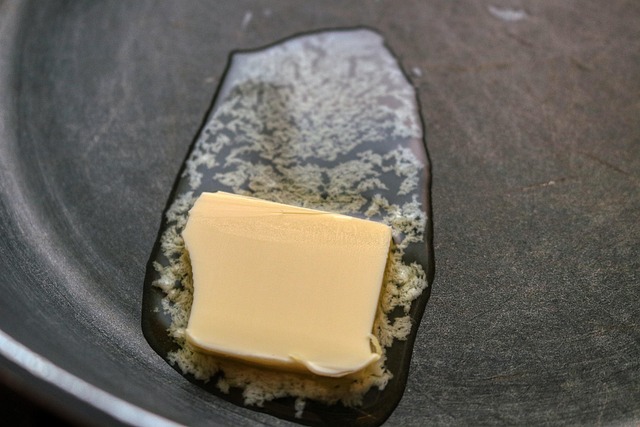Non-surgical fat reduction techniques have gained popularity as safer alternatives to traditional cosmetic surgery, offering targeted fat loss without incisions or lengthy recovery periods. These methods, such as laser, radiofrequency, and cryolipolysis, use distinct technologies like heating, freezing, and energy breakdown of lipid cells to eliminate fat cells. When comparing options in a Non-Surgical Fat Reduction Comparison, key factors include treatment duration, procedural comfort, potential side effects, and long-term results. These non-surgical methods are appealing for their specificity, convenience, minimal downtime, and localized results, making them ideal for individuals seeking lower risk profiles. However, they may produce less dramatic immediate results and effectiveness can vary based on individual factors, with possible temporary side effects and costs to consider. Prioritizing safety and efficacy is crucial when choosing a method, as non-surgical options generally have fewer side effects compared to surgical alternatives. A comprehensive comparison based on clinical outcomes, treatment duration, and risks ensures an informed decision, with treatments like CoolSculpting® and Emsculpt offering precise, localized results. Patient eligibility and long-term results are also critical aspects, as these treatments provide gradual yet sustained changes that require commitment to healthy living and medical guidance.
In today’s quest for targeted fat loss, non-surgical methods have emerged as popular alternatives to invasive procedures. This comprehensive guide delves into the world of non-surgical fat reduction techniques, offering a detailed comparison across various approaches. From understanding the science behind these processes to exploring their advantages, disadvantages, and safety considerations, we provide insights crucial for making an informed choice. Discover where these treatments excel, who they benefit, and what to expect in terms of results, empowering you to select the right non-surgical fat loss method tailored to your needs.
Understanding Non-Surgical Fat Reduction Techniques

Non-surgical fat reduction techniques have gained significant traction in recent years as people seek effective and safer alternatives to traditional cosmetic procedures. These methods, often referred to as non-invasive or minimally invasive, offer a range of options for targeted fat loss without incisions or extensive recovery periods. Unlike surgical procedures, they are generally considered lower risk, making them appealing to those hesitant about undergoing surgery.
One of the key aspects of understanding non-surgical fat reduction is recognizing that it utilizes various technologies, such as laser, radiofrequency, and cryolipolysis, to target and eliminate fat cells. Each technique has its unique mechanism, from heating and freezing fat cells to using targeted energy to break down lipid (fat) cells. When comparing different non-surgical methods, factors like treatment time, comfort during the procedure, potential side effects, and long-term results play a crucial role in determining the best option for individual needs.
Exploring Different Methods: A Comparison

In the quest for targeted fat loss, individuals often explore a variety of methods, each boasting unique benefits and drawbacks. Among the popular choices, Non-Surgical Fat Reduction stands out as a non-invasive procedure preferred by many. This method utilizes advanced technologies like CoolSculpting or Liposuction alternatives to break down and eliminate fat cells without surgery. It’s a relatively safe and effective option for those seeking localized fat reduction.
When comparing Non-Surgical Fat Reduction to other methods, such as intense exercise or strict diets, it offers several advantages. Exercise and diet primarily focus on overall calorie burn and muscle toning, while non-surgical approaches specifically target stubborn fat deposits. This targeted approach makes it an appealing choice for people with specific problem areas they want to address. Moreover, recovery time is minimal, allowing individuals to resume their normal activities promptly.
Advantages and Disadvantages of Each Approach

Advantages and Disadvantages of Non-Surgical Fat Reduction Comparatively
The allure of non-surgical fat reduction lies in its accessibility, safety, and minimal downtime. Techniques like CoolSculpting® and mesotherapy offer targeted treatment areas, allowing for localized fat loss without incisions or lengthy recovery periods. These methods are suitable for those seeking a more gradual approach to contouring their bodies, as results often develop over several weeks to months. Additionally, they provide a lower risk profile compared to surgical alternatives, making them appealing for individuals conscious of potential complications.
However, non-surgical options may not deliver the same level of dramatic, immediate results as surgery. The effectiveness also varies based on individual factors like skin thickness, fat distribution, and adherence to post-treatment protocols. Furthermore, while they are generally well-tolerated, there can be temporary side effects such as soreness, bruising, or swelling. Cost is another factor; procedures like CoolSculpting® sessions can add up, making it crucial for prospective clients to weigh the benefits against the financial investment.
Safety and Efficacy: Key Considerations

When considering targeted fat loss options, safety and efficacy are paramount. Unlike invasive procedures like liposuction, Non-Surgical Fat Reduction methods focus on natural processes to eliminate stubborn fat. These treatments use targeted energy delivery to break down fat cells, allowing the body to metabolize and eliminate them naturally.
A key advantage is their minimal side effects compared to surgical alternatives. However, not all non-surgical options are created equal. It’s crucial to compare different technologies based on their clinical outcomes, treatment duration, and potential risks. A thorough understanding of each method’s safety profile and efficacy will help guide your decision, ensuring you choose a procedure that aligns with your goals and healthcare priorities.
Targeted Areas: Where These Treatments Excel

When it comes to targeted fat loss, non-surgical fat reduction treatments stand out for their ability to focus on specific areas. Unlike general weight loss methods that target the entire body, these procedures are designed to slim down and contour particular regions where excess fat tends to accumulate. This precision makes them an attractive option for individuals seeking localized results without surgery.
The excellence of non-surgical fat reduction lies in its versatility and effectiveness. Treatments like CoolSculpting® and Emsculpt focus on different mechanisms: cooling to freeze and eliminate fat cells and electromagnetic energy to stimulate muscle contraction and burn calories. This comparison highlights the diverse approaches available, catering to various preferences and body types while ensuring remarkable differences in targeted areas.
Patient Eligibility and Individualized Treatment Plans

Patient eligibility plays a crucial role in targeted fat loss treatments, ensuring that individuals seeking non-surgical fat reduction are suitable candidates for these procedures. Before proceeding with any treatment, healthcare professionals thoroughly evaluate patients’ medical history, current health status, and specific goals to determine if they meet the criteria. Factors such as overall health, body mass index (BMI), and the distribution of fat deposits are considered to assess eligibility. This careful screening process is essential in guaranteeing safe and effective results, as different individuals have varying needs and responses to treatments.
Individualized treatment plans are a key aspect of successful non-surgical fat reduction, allowing healthcare providers to tailor interventions to each patient’s unique requirements. These plans take into account patients’ specific goals, body types, and areas of concern, utilizing advanced technologies like ultrasound or laser therapy. By personalizing the approach, treatments become more efficient, targeting problem zones with precision. This customization ensures optimal results while minimizing potential risks and side effects, offering a tailored solution for effective fat loss.
Longevity of Results: What to Expect

When considering non-surgical fat reduction methods, one crucial aspect to evaluate is the longevity of results. Unlike surgical procedures that offer immediate and drastic changes, non-surgical options typically provide gradual and long-lasting results. Through targeted fat loss treatments, such as laser technology or cryolipolysis, fat cells are either destroyed or reduced in size, leading to a slimmer appearance over several weeks or months.
While individual experiences can vary, many people enjoy sustained outcomes that last for several months or even years. However, it’s important to note that maintaining the results often requires adopting a healthier lifestyle, including regular exercise and a balanced diet. Regular follow-up sessions with your healthcare provider can also help ensure longevity and address any concerns promptly.
Choosing the Right Non-Surgical Fat Loss Method

Choosing the right non-surgical fat loss method is crucial based on individual goals, lifestyle, and medical history. It’s important to understand that there’s no one-size-fits-all approach when it comes to non-surgical fat reduction. Different techniques have varying levels of effectiveness, potential side effects, and recovery times. For instance, while some methods focus on freezing or inhibiting fat cells, others stimulate the body’s natural metabolism for fat burning.
A thorough non-surgical fat loss comparison should consider factors like safety, patient comfort, and long-term results. Consulting with a qualified healthcare provider is essential to determine the most suitable method. They can guide you through options, including laser treatments, radiofrequency, and ultrasound therapies, each with its unique benefits and limitations, ensuring you make an informed decision tailored to your needs.
